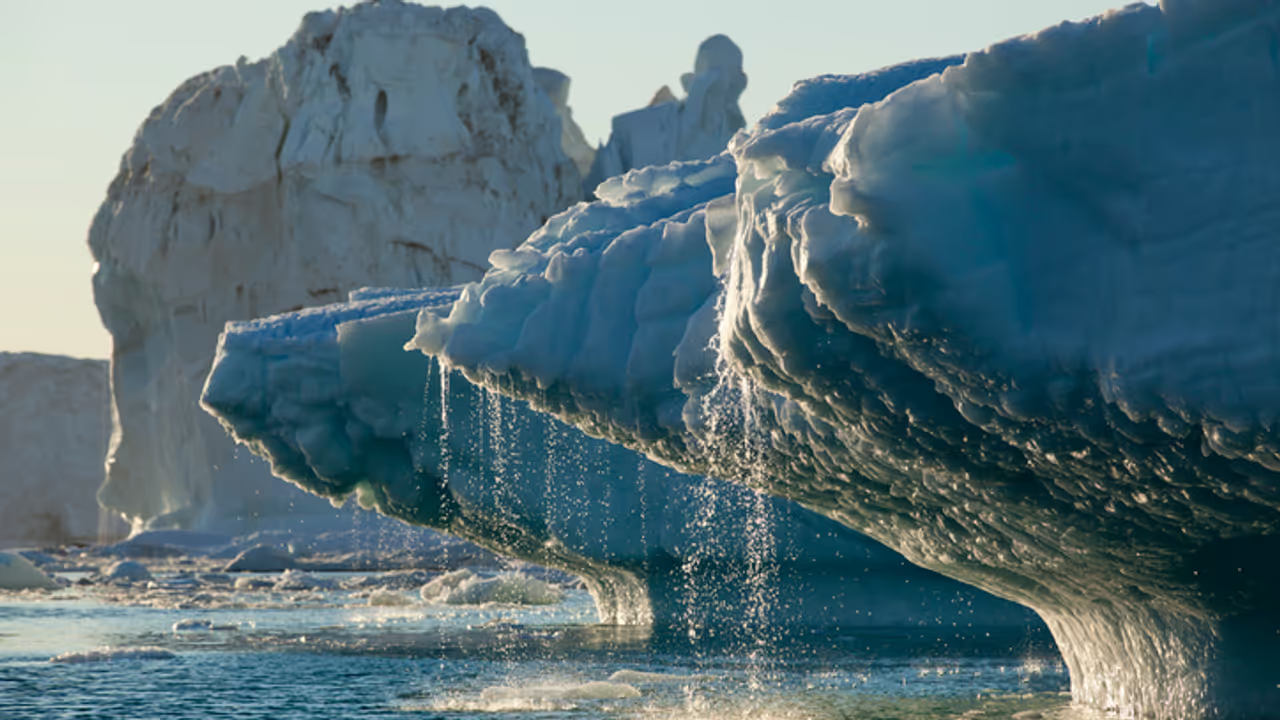Greenland is losing ice faster than expected, changing its coastline and affecting global sea levels and climate patterns. Ongoing research aims to understand how ecosystems respond to rapid warming and what it means for our future.
Greenland, often only glimpsed from airplane windows, is now at the centre of urgent climate research. Around 80% of this vast Arctic island is covered in ice, and that ice is melting fast.

In recent decades, Greenland’s ice loss has exceeded previous estimates by 20%, putting pressure not just on its 56,000 residents, but also on the entire planet. As glaciers shrink and permafrost thaws, the consequences ripple across oceans, coastlines, and climate systems far beyond the Arctic.
The GRELARCTIC project: A deep dive into Arctic change
To understand what’s happening and what comes next, scientists are ramping up a major study called the GRELARCTIC project. This research builds on years of earlier work and is now expanding from deep inland glaciers to Greenland’s newly exposed coastlines. Researchers are studying:
- Plant colonisation in areas where ice has disappeared
- Snowpack evolution to track seasonal and long-term patterns
- River course shifts that reshape the land and ecosystems
This kind of data helps scientists understand how Arctic ecosystems respond to warming, making Greenland a living lab for the future of our planet.
Reading the past to predict the future
To understand today’s fast-moving changes, scientists must look far back in time. Clues from ice cores, ancient rock deposits, and lake sediments reveal how Greenland has changed over thousands of years during both natural climate cycles and recent human-driven warming.
By combining on-site observations, remote sensing, and computer modelling, scientists can project future scenarios of glacier retreat and landscape transformation. These insights are crucial not just for Greenland but for global land use planning and climate adaptation.
A coastline reborn
Between 2000 and 2020, Greenland’s retreating glaciers added 2,500 kilometres to the length of the Arctic coastline. Most of these new landforms are where glaciers have melted away, reshaping the edge of the continent.
Alongside glacial retreat, sea ice is also shrinking in both size and duration. This speeds up coastal erosion, with some Greenlandic shores retreating by up to 20 metres a year.
These changes weaken permafrost, the frozen ground that underpins much of the Arctic. When it thaws, it:
- Releases greenhouse gases into the atmosphere
- Exposes land to violent marine storms
- Increases vulnerability to rising seas
Arctic changes, global impact
The rapid changes in Greenland are not just local concerns. They influence:
- North Atlantic sea levels
- Ocean current patterns
Weather systems around the world
This is why understanding Greenland’s changes is critical. The region is losing its natural defences faster than anyone expected, and the social and economic consequences are piling up.
From increased storm damage costs to threats to Arctic communities, the urgency is growing. The melting Arctic is not a distant problem, it’s a global one.
Greenland as Earth’s climate laboratory
As large parts of the Arctic become ice-free, Greenland is helping scientists learn how fast landscapes change, how ecosystems recover, and how to plan for a warmer world.
In the words of the GRELARCTIC research team:
“Greenland doesn’t just reflect climate change. It predicts it.”
Understanding what’s happening here could be the key to preparing the rest of the world for what’s coming next.


